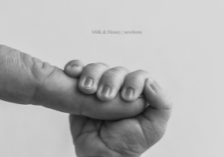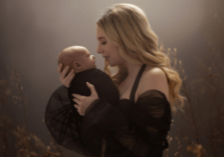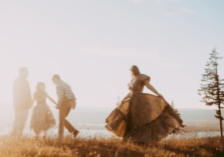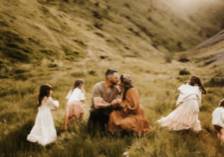The Psychology of Sales : How to Guide Your Clients to Sales with Maggie Robinson of Tog Academy
It’s no secret that most photographers get uncomfortable around the selling process. They don’t want to feel pushy, salesy, or like they’re pulling a bait-and-switch on their clients. And often, they don’t want to do sales in person, as it can heighten their discomfort.
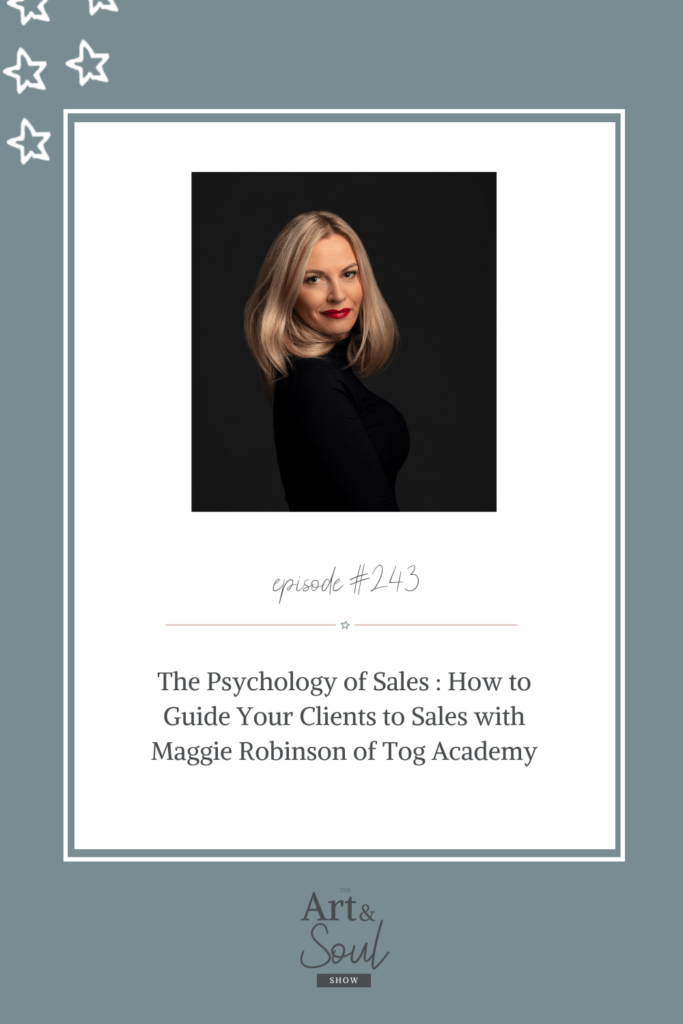
But Maggie Robinson of Tog Academy is here to show us there is another way… a way to make in-person sales feel comfortable and where both clients and photographers leave happy! In her view, it’s all about the process of leading the clients to their final purchase through every touchpoint you have with them, instead of surprising them at the end.
In this episode, Maggie breaks down what in-person sales is, why it’s crucial to her business, how she designs and markets her photography packages, and how to get around the mindset blocks that many photographers face when it comes to sales.
What’s in this episode:
- [02:04] What in-person sales is and why Maggie is so passionate about it
- [04:12] How avoid your clients being “surprised” by your pricing and leading them to sales instead
- [13:04] The unique way Maggie builds her pricing packages and how less is more when it comes to your package offerings
- [17:36] What the actual day of in-person sales looks like for Maggie
- [22:27] How photographers can start implementing in-person sales and increasing their prices in their photography business
- [30:37] Getting over the mindset block around attracting and working with high-price clients
- [37:06] Why some photographers give up on IPS and Maggie’s advice on how to stick it out when implementing IPS
- [42:51] How spirituality and psychology influence the way Maggie teaches and approaches pricing
- [52:30] What success looks like for Maggie in her photography business currently
If you’re thinking about in-person sales gives you a cold sweat as a photographer, you need this episode with Maggie.
SUBSCRIBE: Apple Podcasts | Spotify
Meet Maggie Robinson of Tog Academy
Maggie Robinson is professional photographer, and successful entrepreneur who specializes in personal coaching and in-person sales training for photographers.
With more than 15 years of experience in business management, entrepreneurship, and 7 years in photography training and coaching, her number one goal is to share her knowledge and expertise with photographers around the world, at various stages of their professional journey.
Whether you are looking to introduce in-person sales and products, like wall art, into your business, or have been offering it for a while but would like to get more confidence in selling and have a clear path to follow with every client, she offers tailored services and solutions that are designed to help guide you along the path to success.
Connect with Eden
Follow Tog Academy on Instagram
Follow Tog Academy on Facebook
Join the Tog Academy group on Facebook
Did this episode give you a new perspective on in-person sales? Check out this episode The Heart of Photography: Josie Tan’s Approach to Client Connections & Building Relationships in your Photography Business
Transcript
[00:00:00] Lisa: Hey friend, welcome to the Art and Soul Show. I’m your host Lisa DiGeso, a mom, a photographer, and entrepreneur. Tune in here for pep talks, conversations, and advice on photography, creativity, mindset, business, life, and that messy in between. This is the place where you can go when you need a boost of encouragement, a kick in the pants, and [00:01:00] inspiration to pick up your camera.
[00:01:02] This is the Art and Soul Show. Hello, my beautiful friends. Welcome back to the show today. I am super excited to dive into today’s conversation with Maggie from togacademy.com. Maggie helps photographers increase their profitability and efficiency with in person sales. So we’re going to have a really fun chat today.
[00:01:22] I’m super excited to dive in. Maggie’s located in the UK and welcome Maggie.
[00:01:27] Maggie: Thank you so much for having me. It’s so exciting to be on this podcast. I’ve been, I’ve been following your career for years and you are the aspirational place everyone wants to be. So you’re the legend of the industry. I’m so, so privileged to be here.
[00:01:41] Thank you so much.
[00:01:41] Lisa: Thank you so much. So I want to start and talk about in person sales because So in our industry, especially the photography industry, there is this fear around selling. Like there just seems to be this innate fear that everyone has. So I want to know how you discovered your passion for in [00:02:00] person sales and what sparked your passion to teach it.
[00:02:04] Maggie: So in person sales, essentially as sales, it’s business and none of photographers might mainly being photographers, being an artist. And the reason why we got into what we’re doing is because We love creating, we love art, pretty things. And all the other business stuff is like dirty words. I’m just going to close my eyes, ignore it completely, just because I’m creating something beautiful.
[00:02:24] People are going to love it and they’re going to come and buy. And this is where we becoming a bit disillusioned when it comes to business, because this is essentially a business versus 20 percent art, 80 percent running it, making it functional, earning money from it. So if you ignore that business side.
[00:02:40] It’s, it’s a struggle to kind of, uh, make it a thing. So when, even when we do courses, when as a photographer, we want to learn something new, it’s a struggle. always the editing, the shooting and the business is kind of a necessity. We don’t want to touch it because it’s overwhelming. And for me, business is art.
[00:02:57] I love it. Uh, I absolutely live and [00:03:00] breathe. Uh, IPS is almost like a day off. Uh, I come there and as long as you’ve done the job, And it’s a process, not an event. IPS should be easy. It’s when we haven’t done all the work to start with, the consultation, the proper connection with the client through the session, then IPS becomes a sales appointment.
[00:03:17] If we’ve done all the work before, it’s essentially finalizing that sale that day. It’s happened already essentially in someone’s mind. So I absolutely love it. I want all my students to love it. I have passion for it. I can talk for hours about sales, literally without PowerPoint, without, I mean, anyone who did my workshop will know that I can just stand there and deliver without even slides behind me.
[00:03:36] Everything about sales. It’s exciting to me. So I want everyone to be excited if I can pass it on to you guys. All the best.
[00:03:42] Lisa: I love that. What I think is really fascinating, especially when it comes to in person sales is this maybe misconception or maybe it’s the miscommunication that so many photographers have.
[00:03:54] And so you end up hearing these stories where clients feel like it’s a bait and switch. And that’s like, I think [00:04:00] our biggest fear is that we feel like we’re tricking someone. And so how do you. Kind of just like nip that in the bud so the client knows what they’re going to get and you know how to sell it.
[00:04:12] Maggie: So it’s through repetition. So you have two types of sales. You can actually, you know, do the shoot and you’re in your own mind and you focus on what you’re doing. You don’t really talk to client, you ignore consultation because you, you want to have as little communication as possible. And then Maggie somewhere in UK told you to do the in person sales.
[00:04:29] So you sit in front of a client and then you unleash the whole thing. And this is the buy and this, this, this, and this is what we have. And it’s overwhelming. So it will be overwhelming for anyone for us, for the client. So. Naturally, what they’re going to say is, I’ll go home and think about it. And after two, three appointments like this, photographers think, actually, do you know what?
[00:04:46] This doesn’t work for me. I’m not going to do it because all clients are like that. And this is not my market. My market’s not good. I live in cities too big, cities too small. We always find excuses and we don’t look at it as process. I say the easiest way, the easiest and the [00:05:00] hardest way to make IPS non salesy is to stretch that process as much as we can.
[00:05:07] So be visible everywhere online. So by the time people get to you, they already know what to expect. So for example, if anyone wants to look at Instagram, dinkyfeet. com or dinkyfeetphoto, that’s my extension. It looks like a gallery of wall arts. It’s not about the actual images. It’s about me holding a frame, me standing next to a frame, me opening a frame.
[00:05:26] So if someone follows me on Instagram as a client, by the time they get to me, they already know that that’s an expectation. They will be like the product because everyone else is buying a product. Now, when you start photography, obviously you don’t have those cells to start with. So make yourself a second picture with a frame.
[00:05:40] I haven’t got a frame. Get yourself some samples, but don’t Call it samples online, just say a beautiful products arrive at the studio. It doesn’t have to be a sample. People will look at it and automatically they’ll feel like, Oh, someone else is buying it. If you don’t have any products, any samples yet, you use digital templates, something that stipulates that this is actually what you do, what you specialize with.
[00:05:59] [00:06:00] And by the time client gets in touch, they already have that in their head. This is a product. This is the end result of this journey. And then we book them for consultation. Now. If you want to shorten time, you would think, oh, why would I need consultation? I’ll send them form. The problem with forms in 2024, wherever we go, what happens is we are just a number You go to, to your doctor.
[00:06:19] Just a number. Just call. You’re just a number. Any offices. So people crave to be treated as humans, essentially. Crave treated, yeah. Personally, to have that bit of personal service and that adds the value to the whole process. So when you say to someone, hi Jenny, I would like to sit you down in the studio or have Zoom consultation just to establish.
[00:06:38] What it is that you want the session. How you see the session, what your colors, you like, et cetera, you, you, you, it’s all about the client. And ideally we don’t want to do it over the, over the phone. We want to do it face to face, even if it’s on zoom because body language is a massive part of that communication.
[00:06:52] Ideally you want to get them in a studio. If it’s too far for a client, I would rather have them on zoom for the consultation and IPS in person than the other way [00:07:00] around. It’s always, always, but it’s mostly to show the client that you listen. And that’s all there is. That’s all there is. 80 percent clients talking, 20 percent you’re going to tell them, by the way, prep like this for the shoot, wear this, et cetera.
[00:07:13] And our prices start from usually client spent X, Y, and Z. Always talk about prices. The more you tell, the more it’s a muscle memory, the more you comfortable and the client’s comfortable with money. Don’t avoid that conversation, but overall consultations, not as much about money as about clients. I’m loading and sometimes this is a 10 minutes conversation.
[00:07:29] Sometimes it’s half an hour. I let them talk because I want them to feel comfortable with me as a person, as an artist. And I want them to feel like I’m in charge of that. I know what I’m asking. I’ve got questions written down. It’s not that I’m freestyling it, but I don’t make it sound like a questionnaire essentially.
[00:07:44] I don’t go one, two, three, four, number seven. You know, you’re going to wear this and this. I always ask them about something personal to them. So what’s your story, how you met, how you envisage to bring that child up, what your, you know, moral, what’s your, how’s your moral compass, you know, things more above and beyond the, you know, how’s your [00:08:00] colors at home?
[00:08:00] Is it modern, minimalistic, rustic, opulent? This is all going to come, you know, and 80 percent of my clients will be quite similar because I’ll attract them by the work that I’m showing. They will come and they’re quite similar in terms of taste. But what makes them different is their personality. And then when they come to you shoot, you almost feel like your friends.
[00:08:16] So you know what to focus on. You know what they were trying to hide, what to try to hide, what they try to avoid, you know, what the pride and joy is. If there’s anything specific to them as a family, conversations to avoid. So you know them so well. And that’s only the first time you physically meet in real life sometimes, you know, unless you took them for consultation to your studio.
[00:08:32] So that barriers out of the question. Obviously, we want to make them, you know, feel like we listen and we care and, and all this is very important. We want to tell them about the session, what to expect all this as well. But there’s two key questions that are asked within the consultation that clients don’t realize.
[00:08:50] And actually I teach that in my training, but I actually give it to you for free guys, because this is the crucial, crucial thing about IPS and that is going to change your life. During your consultation, obviously you’ll get the basic [00:09:00] information, but ask them what type of products are you most attracted to?
[00:09:05] Because why are you asking this question? You’re not selling them anything. So they don’t feel like it’s salesy. It feels like it’s informative and you care, but what happens is they start talking about products. And what we want to do is put those words in their mouth. So people believe what they say is true.
[00:09:19] If I tell them, you need a frame, they’ll be like, yeah, right, Maggie. If they say, Oh, we’re interested. I don’t know. Maybe an album. So maybe in frames, they start talking about it and becomes fucked. Why would they not buy later on? We had this conversation at consultation. Why would they not buy it? So that’s the first question.
[00:09:33] Write it down guys. What type of products are you most attracted to? Second question, equally important. where is your product going to be displayed? Because automatically human brain, and we’re going to talk about human psychology at some point, probably as well, because my favorite subject, but human brain essentially visualizes sizes straight away.
[00:09:51] So if you say, where’s the product going to be displayed? I’m thinking that 40 by 60 behind me, I’m going to put in a living room. So automatically you think about where you’re going to put it. [00:10:00] They don’t think, Oh no, Maggie, I’m not going to put it anywhere because I’m not buying it. No one ever thinks that.
[00:10:05] And my students, the first question is always, what if they say that I want a product? I’ve been doing this job for 12 years. No one ever said that because I’m feeling it. We’re just talking, just talking. So then when you can get to a shoot, you’re going to shoot in a space when it’s surrounded by wall art.
[00:10:19] So your studio should be filled with wall art. I’m not saying excessive numbers, but something quite significant. It’s got wow effect. I don’t need 50 frames behind me. I just need one, but really good one. And then they stare at this frame. On average sale, the shoot’s going to be an hour and a half. Let’s say they spend an hour and a half looking at the frame.
[00:10:35] Okay. Subliminal message. And then I’m going to say, you know, look at this frame. It’s got family picture. Amazing. Can you imagine that in your home? Again, I’m not selling. We’re just talking about it. So then when we get to the sales appointment, it’s no longer a sales appointment. It’s appointment with your friends that we’re talking about how I can make their life better by improving their visuals, you know, interior design essentially.
[00:10:57] And then we go through the process. I have that [00:11:00] process literally detailed in, in the, in the training course, but what happens now? Remember they saw me on social media with wall art. We had that conversation about it just in, you know, it’s marginal mentioned during consultation, but it’s important because they visualize it, then they talk about it.
[00:11:15] So it’s variable and visual. And then they come to the studio, they see it. So now when I say, you know, so, okay, so you’ve picked your top package, it comes with voucher towards product, what type of product they most attract to. So remember during the consultation, you mentioned that you love frames and they’re going to say, yeah, she remembers so well done, you know, and they’re really excited that actually someone listened.
[00:11:35] They said, yeah, we love frames. And then I would say, Are you still thinking of hanging it in a living room? Because remember, I’ll ask them where the product’s going to be displayed. And they look at me and they think, Oh my God, she reads my mind. This is great. Yes. In a living room. That’s great. Majority of my clients for the living room choose.
[00:11:50] 40 by 60. So we start this conversation. It’s not sales. It’s picking up on the information you already have and reusing it, recycling it. So this way you [00:12:00] don’t feel pushy because no pushy sales, you know, they don’t want pushy sales. You don’t want to be pushy because you’re an artist. Remember we’re introverts.
[00:12:06] We just want to push pixels in the corner in the back room, drinking cocoa. We don’t want to talk to people. So we need to have a simple way of making money without actually putting ourselves out there. And this, this essentially all my students get a script, This is where you say, this is the questions you ask and you get so used to it.
[00:12:21] It’s like muscle memory. Essentially, the more you do it, the more comfortable you are. The first time you ask about money, you shivering the hundred and 20th time you ask about money, it’s just like, how would you like to pay card cash? You know, it becomes. It’s just a second nature. So the more of that work you do at the beginning, the less you’ve got at the, at the end.
[00:12:40] So it’s like cooking. The more prep you do, the less you suffer during cooking. It’s literally, it’s exactly the same.
[00:12:45] Lisa: I love that. So when you have your packages, you mentioned you’d have a voucher for a product, which I really think is interesting because their, their package would include whatever you wanted, but then you have that voucher that they get to choose.
[00:12:59] And I think that [00:13:00] that’s not traditionally how I’ve seen it being taught. So can you explain that a little bit more?
[00:13:04] Maggie: So as photographers, when we start a business, we think, okay, so what we’re going to do, we need some packages. So let’s say how many packages we’re going to have. And some photographers pick up, you know, four or five.
[00:13:14] No one needs that many. We need three. Three is a, it’s a number that we are accustomed to from young age. We have three little pigs, Charlie’s angels, everything comes in threes. It’s like a lucky number. And this essentially gives us enough choice without being overwhelming. First package is your barrier to entry.
[00:13:30] That’s not what you want to sell. This is what people should think they’re going to buy. And then they come in through your skills. You’re going to push them to the top package. Push is a strong word. It’s not pushing. It’s suggesting. Now, majority of photographers go after the middle package. And this is where I beat out of them at the training, because this is not where we want to be.
[00:13:46] This is why people with no packages say IPS photographers have ceiling. That’s your ceiling. If you’re aiming for the middle package, I don’t want you to sell middle packages. That’s a failure. That’s like out of the window. No. Middle package should be slightly bigger than the basic package, but essentially [00:14:00] include nothing exciting.
[00:14:02] And then you have top package that should include everything that’s sexy, everything. When we don’t value ourselves and our skill, our expertise, we tend to over deliver in those first two packages. So that’s why a lot of photographers will say, Oh, I sell a lot of middle packages. I sell some basic packages, hand on heart, 99.
[00:14:20] 9 percent of packages that I sell are top packages, because that’s the only logical one that there is. In the first package, there’s always going to be five digitals and five matching prints. Sometimes in the second is going to be 10 digital 10 matching prints. That’s standard. In the top package is going to be 20 digitals, 20 matching prints, voucher towards wallets, voucher towards next session, slideshow, Facebook cover, something, something.
[00:14:41] You know, I over describe it. But essentially what they get is 20 digital 20 matching prints, but I just beef it up with things that don’t cost me anything slideshow. I show people anywhere at IPS, but I only add that slide showing top package only in that because that’s the only package I want to sell.
[00:14:57] I give my clients Facebook timeline cover, which is [00:15:00] essentially free free advertising for me because that’s with my website address and everything. And I added just in a top package because visually on my website, I want that package to look massive. So it’s actually a long package. It says consultation, viewing appointment, use of all the props, you know, family included.
[00:15:18] It’s standard anyway. And I could put all those things on the top saying, you know, your family is always included. Pets are always included. You get consultation, you get viewing. But if I put it on top. that shrinks those visual packages that they see when they land on my website. So imagine Lisa, you have exactly the same packages, but you say, you actually like matter of fact person.
[00:15:37] And you say, this is five digital, it’s five matching prints. This is 10, 10 matching prints. This is 20. That’s all yet. And everything else obviously you get, but for people, this is not obvious. You almost need to spell it out for them. This is why you’re paying so much money because all this is actually included.
[00:15:50] Consultation is not free. It’s my time. But it’s in theory free. The viewing is not free, it’s my time. So I want to make sure that they know why they’re paying that money. [00:16:00] So when I list everything, obviously those packages look massive, but essentially tangible cost is your prints and your USB. Yeah, that is literally everything.
[00:16:07] I mean, slideshow I use Animoto. So per client could probably cost me 50 cents or something is nothing. Facebook cover Canva, you know, it’s for free essentially because I have the same Facebook cover for four years, but visually those are big. And then obviously in the top package, that’s not where I want to end my sales.
[00:16:24] That’s where I want to start my sales. So I have those vouchers for products and I have vouchers for. next service in line. And it’s always next service. So if you’re a newborn photographer, let’s say maternity photographer, and you do newborns, they get a voucher only towards newborn shoots. And they buy a top package, they get a voucher only towards your sitter session.
[00:16:41] And they say, Oh, can I swap it to cake smash? And I always say, no, because I want to see you three times a year because I want to see you guys grow, see your family develop. And obviously it’s a good thing, but obviously what you want is to get that average for that year for that client higher up. And the voucher towards wall art is, uh, it would be 120, I think if you [00:17:00] translate it, 100.
[00:17:01] And that’s a hook for them to spend more money. Because if I just say, you know, look at this beautiful wall art, you can buy it. I have no motivation to do it today. And I said, look, you have this voucher, you have 30 days to spend it. I don’t say 30 days unless they ask me, because otherwise they feel like they need to do it at IPS, which is exactly where you want to sell it.
[00:17:17] And you have a hundred pounds to spend on any frames, any canvases. And then I carry on with the spiel of, you know, remember when you said you, you love frames and you want to put it in your living room, et cetera, et cetera. So that’s a hook to more sales. So essentially that vouchers only in the top package, because in the middle package, I don’t want anything exciting.
[00:17:35] Yeah. Everything in top.
[00:17:36] Lisa: Interesting. I like that. Now, with your in person appointments, a lot of the times you hear, Oh, I have to go home and ask my husband or I have to check with you so and so. Do you have both decision makers at the
[00:17:51] Maggie: appointment? Yes. And I’ve experienced that so many times. I actually give clients booklets before they leave the shoot with a book.
[00:17:57] the excuses dealt with. So I say, [00:18:00] and I actually verbally confirmed that as well. So make sure at the, at the appointment, at our purchasing appointment, we are going to decide on products that you want. This is the only appointment that you have. There’s no further follow up appointment for that. So make sure anyone who’s responsible for decisions is going to be there on the day.
[00:18:15] Whether it’s your husband, it could be a mom, could be a sister. It doesn’t have to be hot, you know, if not comfortable on their own. I cringe because there’s always gonna be like, oh, can I call my husband something? But I would rather have them both there at the same time. So that’s first thing. I always mention to bring money as well.
[00:18:31] Now this sounds ridiculously obvious, but having had one client in 12 years that said, sorry, I forgot money. It hurt me. And I actually put that as a point, make sure you bring money. And I started laughing at it because it sounds ridiculous. I said, look, I accept cards. I accept, you know, I don’t accept checks.
[00:18:46] I accept cash, et cetera, et cetera. And he’s like, you know, problem. And the third thing that I mentioned is three things. Everything comes in threes. I always say, make sure you measure the space that your wall art’s going in. Okay. Now, why would I say that? Because [00:19:00] clients never said, Oh, Maggie, when I come for your viewing, I’m buying this massive frame.
[00:19:03] They never say that. But because I say it, it’s almost me assuming that this is what’s going to happen. And in their head, they feel like, okay, when I come, I need to be responsible. I need to actually know that this could potentially lead to sales. So they’re not surprised. I don’t want them to be surprised with anything at the sales appointment.
[00:19:20] Do people send me a picture of the wall with, you know, measurement? Okay. No, hardly ever, but in their head, it’s like, yeah, she mentioned that I need to make sure that I remember that it is going to end up with me buying a frame. But I always say, you know, make sure you send me a picture with your wall with like a four.
[00:19:37] piece of paper so I know roughly what size and some furniture around so I know what to match to or as I just measure the wall that the space we’ve got available with mostly and they’re like yeah yeah sure sure sure so they’ve got those three things they’ll probably remember one or two but I remember every point where I can mention wall art it’s almost like a keyword that I want to put wherever I can it’s like I’ve got wall art Tourette’s you know if I say any other word it’s going to be wall [00:20:00] art this, wall art this, you know, bring money.
[00:20:01] Or the other thing that I mentioned as well, which actually makes people cringe. A lot of photographers downplay the expense of this. Oh, it’s, you know, it’s all affordable. I almost want to make my clients feel like they need to remortgage the whole estate before they come for my sales appointment.
[00:20:19] Because then when they come and they only spend 6, 000 or 6, 000, 5, 000, it’s like, Oh, I’ve expected much more because I was so excited. Talking about it so much. And I laugh when I talk about it, but it’s very serious. I said, just make sure you have all your credit cards with you. You have your mortgage sorted because this is going to be expensive.
[00:20:36] And I started laughing and mom started laughing. Dads don’t laugh. Dads never laugh. But you know, when they come, it doesn’t matter how much it is. It’s less than they were expecting because it’s always like, I’m, I’m, you know, hyping it up how much this is going
[00:20:50] Lisa: to cost. Oh, I like that. That’s an interesting approach because I think we often hear like those clients just having no idea.
[00:20:57] And then they hear it’s like a [00:21:00] 250 session fee and then, then they know, then they know something about packages. They don’t know what the base packages are. They don’t even know, have any indication of what they’re going to spend. And I think that’s when we get the bad rap in the industry of the bait and switch because we’re not transparent on what this is going to cost.
[00:21:18] So do you have any advice for someone who. maybe is struggling with the transparency and maybe having those bait and switch moments.
[00:21:27] Maggie: So for me, uh, during consultation, I mentioned it’s a little thing, but you know, it’s almost, it does help. I almost say, you know, I’m one of the most expensive photographers in the, in our area.
[00:21:37] What made you choose me? And if you say this, there’s no way on earth that can come to a viewing and complain about prices because you made it clear. Second thing you can say, Minimal spend is if you have a minimum spend, if you don’t have slightly inflated average sales. So if your average sale is 2, 000, 1, 000 at 30 percent of it to say, Oh, my, my [00:22:00] average sale, what clients spend is one and a half thousand, 2000.
[00:22:04] So that gives them a ballpark, what you expect. them to spend. Talk about prices openly because if you go somewhere like if I go somewhere, I hate when I need to say send an email for pricing. No, no, I want to look at the website. I want to know how much it costs. Oh, but maybe If you put your prices on a website, it’s not for the, you know, the right clients wouldn’t care about money.
[00:22:24] Actually the right clients care about money. That’s why they have money because they don’t throw it randomly. They want to know how much things cost because they budget as well. If it’s 5, 000, I want to know it’s that much. I don’t want to email. No one’s got time to email and call and ask if they can afford it and then feel awkward.
[00:22:39] I don’t want anyone to feel awkward. I’ve got all my prices on the website. It’s wallet prices. It’s service prices. Everything’s out there. So it’s almost like pre selection. Yeah. So if they call me, it doesn’t mean that they’ve checked the prices, but it means that I’m not hiding them.
[00:22:54] Lisa: I like that. That’s really good.
[00:22:56] Okay. So how can photographers [00:23:00] introduce IPS into their business without overwhelming themselves?
[00:23:05] Maggie: So the reason why we don’t do IPS is because we’re freaking out and we’re introverts. So I need to take, take them by the hand, take you guys by the hand and do little things. So there’s two different types of students that I have.
[00:23:15] One student is like, Maggie, tell me what to do. And I give them 20 points and they implement everything and they’ll be great. They’ll, they’ll nail it, but that’s probably about 20 percent of students. The other 80 percent is Maggie. I don’t trust this system. In fact, I don’t trust sales. I don’t trust any salespeople.
[00:23:31] I just, I need to make sure that it works. So then we do bite sized things that work and then we do a bit more. And then we do a bit more. Now the industry. Sales guru situation at the moment. And this is whoever’s watching it that teaches IPS. They’re going to be like, Oh, she’s destroying us. But what happens is all the big people teach.
[00:23:50] Oh, this should be a markup of 10 times, 20 times, whatever, a hundred times. Do you know what? When you starting sales, I need you to get comfortable first. I need you to, to [00:24:00] learn the process first. to develop the muscle memory. What I don’t want the students to have 10 times markup, do the IPS process one, two, three times and not sell and start to doubt themselves and start to doubt the process.
[00:24:14] I would rather you have your three times, four times markup first, go through the process, sell something. pop it on social media, actually see the products. There’s nothing more exciting than seeing products. You know, in real life, you see the frame, like, actually, I made this. This is great from start to finish.
[00:24:28] This is the process that I created. And you’re proud of yourself. You’re proud of your work, but more than anything, you’ve seen it work. So you’ve gone through the process. You’ve asked the questions, you go through the consultation. And then at the end, you said, what types of frames you’re interested in?
[00:24:43] And the clients actually pick the frame and they buy it. And you sit there. Wow, this actually worked. This is great. And you do it again and again because success breeds success. Now, the biggest, biggest thing that we do, if we don’t sell three, four, five times, we forget about it. We start skipping steps. We start half [00:25:00] trying, you know, and what happens is then we downgrading the process because we stopped believing it.
[00:25:05] Now, prices can be raised anytime. So if you have your times four markup and it works for you and you sell and you sell and you sell, after a year, put the prices up. We’re the only people who know the prices. Clients don’t sit there monitoring our wallet prices. So then you grow your confidence, you grow your prices.
[00:25:22] And it’s easier than to, to actually sell. If you start from higher markup and it doesn’t work, you will never push yourself to carry on.
[00:25:30] Lisa: Interesting. It’s a good point. Lisa, write it down.
[00:25:36] Maggie: I’m like. It’s building confidence. That’s all there is. It really is.
[00:25:41] Lisa: It is literally. It is. And I think that’s one thing.
[00:25:43] I love that you mentioned the confidence because that is something that photographers, we just struggle with. Yeah. We really struggle with that confidence and, and saying my work is worth this. Yeah. Right? My, my work is worth it. A livable wage, a sustainable business, especially because we’re [00:26:00] newborn maternity photographers and we buy everything under the sun.
[00:26:02] You need to be able to afford it.
[00:26:05] Maggie: It’s seeing it. It’s like with gyms. You know, if you, if someone says to you, well, Lisa, if you eat carrots all your life, you’ll get ripped. I’m like, all right then. You don’t eat carrots. But if you go to the gym and you see a bit of, you know, six pack, actually I’ll go to the gym more because I see the more I go, the more this develops.
[00:26:20] Same thing with this. Oh, dear photographer, put your markup times 10 and you’ll be, you’ll be great. You earn tons of money. No one is going to put the markup times 10 and suddenly, you know, everything’s going to work. It’s step by step process. It’s literally, especially for artists. It’s not, Oh, you know, I’m going to wake up in the morning and I’m going to be this big, big price.
[00:26:38] Well, I am, there’s a lot of photographers that have big prices and they’re super excited about it. It’s worth nothing unless you sell it. All those big packages, you know, if you have 1, 000, 3, 000, 20, 000 package, if you don’t sell the 20, 000 package, you don’t have 20, 000 package. It’s, it’s, it’s fiction.
[00:26:53] It’s only worth something if you actually sell it. So I say, you know, little steps, get comfortable, build confidence [00:27:00] at price. But the main thing is don’t sit on a price, change that price as you evolve, change the price every year. Because otherwise you’re just, you know, lowering the, the. average of everyone else and I cannot buy my fancy candles if everyone’s charging next to nothing.
[00:27:12] So yeah, very important.
[00:27:16] Lisa: Now, one of the biggest comments we get is my clients would never pay that. What would you say to a photographer struggling with pricing and attracting clients?
[00:27:25] Maggie: I am the photographer to explain this because I’m on my third studio now. My first studio was in the middle of nowhere on the farm.
[00:27:34] I had sheep outside, beautiful studio, but it was literally in the middle of nowhere. And if a lot of photographers said, I’m in my location, won’t let me make any money. I said, look, it’s taken people half an hour to even get to another building from where I was previously. So location, unless you do, if you’re doing something special, different to everyone else, people will travel, they will travel.
[00:27:53] And this is not saying it, I’ve seen it. Then from that studio, I moved to a studio in the poorest part [00:28:00] of north of UK. It was a miners village where everyone lost the jobs. It was massive unemployment. People were swearing outside of my studio, leaving cigarettes, cigarette butts. But the studio, the moment you walked through the door, it was a nicer space.
[00:28:15] The surrounding the area, the average salary was next to nothing. It was horrific. And still within that area, I found people who valued that enough to come. They were coming from afar and coming for service. So we have the same. pond of people. Photographer here, an hour away, three hours away, we access the same people.
[00:28:36] It’s how you portray yourself online, your language online, how you visually brand your, your company, the voice you have online, that’s your branding as well, not just images. Everything attracts certain clients and you need to visualize how you see that client, who’s your client. And when we start photography, I always feel like Oh, it’s going to be, you know, two Range Rovers, two dogs, two, two kids in private school and everything.
[00:28:56] Thank you. Don’t remember. It doesn’t work. And then we start working as photographers [00:29:00] and we realized those clients are not necessarily the clients that we want, not our type of people. Maybe we don’t get on with them. Maybe we feel substandard in comparison. So maybe we feel like we don’t deserve them.
[00:29:10] You know? Yeah. Everyone’s got different personality. You need to build yourself, treat yourself as a project to become a better person, more interesting person. Then you resonate with different people. You attract different people. It needs to be professional online. From the moment they send you the first message, everything needs to be professional.
[00:29:24] Everyone who doesn’t have CRM, why have you not got CRMs? The main, main thing in every business. And you know, if you start a business, that’s the first thing that you get. And then automate everything, make everything branded, make everything pretty. So they know when they’re in self hands. If, I see a lot of those messages, screenshots, you know, hi, hon, kiss, kiss, you know, emojis.
[00:29:42] I don’t want any of this for clients because if I expect them to spend thousands, they don’t want that. You know, it’s, it’s little things. So that visual, how you portray your business counts and that attracts different clients as well. And there’s a lot of photographers that work from home and they’ll say, because I work from home.
[00:29:59] People [00:30:00] with money won’t come to me. Absolutely not the case. If you portray your business in a certain way and you are professional, you can be professional working from home as well. That space does not define you. Britain’s best newborn photographer, Amy Ahmed, Possibly working from the smallest space on the planet, in her home, her images are incredible, incredible.
[00:30:19] Those images, if I had another baby, this is where I would be going. And I don’t care if she has a big studio. She doesn’t have to have a big studio for her care ever because the way she portrays herself online, she’s got a branding voice that attracts certain people. So you need to attract the people that you, with your voice, that you want to have in a studio.
[00:30:36] I love that.
[00:30:37] Lisa: I think that’s, that’s the nail on the head is there is a doubt that you’re going to be able to attract. the people that value it. And so what advice do you have when people have that roadblock or that, that mindset that I’m struggling to get people that who value me and value my work?
[00:30:54] Maggie: You need to figure out why, why that is.
[00:30:55] Because a lot of people are ashamed of better clients. [00:31:00] We don’t feel confident and comfortable with better clients. We don’t feel comfortable because, for example, we feel like we couldn’t afford our own work. So maybe no one else can afford our own work. We cannot throw our preconceptions onto people because we, first of all, we’re not our work.
[00:31:16] We are separate to the work we do. Second thing, people are coming for, for our work and for, you know, how we portray ourselves. And if we have this roadblock that this isn’t a client that I will never get, then I’m you’ll never get them. You know, it’s, it’s, it’s literally that I photographed a lot of footballers in UK, pretty much like, and I’m not into football.
[00:31:35] This is the best thing, which is probably what attracts everyone. Because when I’m I don’t do that. Because you don’t fangirl. Yeah, I don’t fangirling. Yeah. You’re a celebrity. This is, you know, I’m not going to text you. I treat them like I would treat my neighbor. And I treat them in the same, with the same respect, but on the same level.
[00:31:50] I don’t treat myself as a staff or subservient to them. I treat myself on the same level. And if they disrespected me, I would kick them out of the studio, same as someone with no money or with money. It doesn’t matter. [00:32:00] So this way, you attract the friends, you attract their social group because they know you’re the go to.
[00:32:04] That’s it. Photographer that doesn’t treat them like, you know, the special yeah, so, you know, it’s, it’s almost having fun with this, you know, you have fun with this people be get attracted to to fun, you know, don’t treat yourself too seriously. Don’t put negative posts on on social media doesn’t matter what happens in your life.
[00:32:20] Look it. It’s that yoga thing. So, yeah. years ago, pre pre baby, I used to go to yoga. I’m not very fit now. But there was this bubble thing. And the lady that was teaching us said negativity should be locked in a bubble. The moment you walk into yoga studio, imagine that bubble, you lock that bubble and it’s locked, don’t spread it out.
[00:32:37] And this is something that you should kind of apply before shoots. It doesn’t matter what happens in your life. You know, your boyfriend dumped you, your kids had some problems at school, the moment you walk into the studio, that doesn’t come out. Yeah, game face on game face on. Unless you pay your clients to be your shrink, your personal life stays with you.
[00:32:57] And you know, it always needs to be professional. I’ve [00:33:00] seen it happen. I’ve seen photographers talk about everything. Clients don’t care. They need to be there. So they sit there and they smile. They think, why would I listen to this? Always ask them about themselves, let them talk about themselves. And they’re going to feel fabulous and they will bring people who Want to, of course, similar, another thing to do, and it’s a little thing, but it does actually work really well.
[00:33:20] Talk packages for every service that you do offer a voucher, one voucher for friends and family. Remember marketing costs money, but that person who comes found you love your service and obviously they love you because you’re great and you show up and the work is great. They have this one voucher to give someone.
[00:33:40] So they always going to give it to first and foremost, person who can afford you. Because otherwise it’d be a really nasty thing to do to give it to someone who cannot afford you. Second thing, someone who needs your service. Maybe their friend mentioned they need a photographer, maybe just had a baby, maybe they’re pregnant.
[00:33:53] So it’s almost like your marketing coupon that they give to the target market. Yeah. Always do [00:34:00] it with top package. Because the top package person obviously values you enough to buy all the images. And they will actually have this little token that I can give it to someone else. And this needs to be printed box beautifully wrapped.
[00:34:10] It needs to be visually attractive. It can be online voucher because no one cares about those. It needs to be printed. So when you deliver the USB, the prints actually pop it in a box saying this is for you, but for your friend, you know? But gifting is as as exciting as receiving. So people want to give something.
[00:34:23] Love that little things, you know, connect the little dots. Every little bit helps. So if someone said, you know, what’s the one thing that would fix anyone’s business? And it is not so much one thing, but there’s a lot of those little things that kind of things.
[00:34:37] Lisa: Yeah. Yeah. I love that. So I want to ask, I’m sure you have some amazing client and student transformations.
[00:34:44] So can you maybe share one you’ve seen in a photographer’s business that really sticks out for you?
[00:34:49] Maggie: Quite a lot. I mean, for, if anyone wants to read actual real life, life reviews as well, togacademy. com IPS bootcamp, I do have screenshots and everything. I do send quite a lot of them, but I had, I love [00:35:00] skeptical people, you know, I love skeptical people and.
[00:35:03] Four, five years ago, I had a lady much, much older than me doing photography for about 20 years and she came to one of my workshops and she sat at the very front with hands like this. Oh, just like? Yes. She took zero notes. Everyone was putting notes down. She took zero notes. And I’m thinking, right, I know I provide a lot of content here and you think you know everything.
[00:35:29] Cocky. All right. All right. That’s fine. And she was looking at me almost thinking like, what can you teach me? I’ve been doing it for 20 years. You know, I don’t know many things. I’m a butt driver. I’m a butt, you know, like diver, but I know sales. So if I’m teaching sales, you’re there because I’m probably better at this little thing than you do.
[00:35:47] That’s why you’re here. So she’s gone through the workshop. I haven’t heard from her for two years and two years later, she messaged me. I’m not going to mention her name because she’s actually quite well known and there was the happiest message of [00:36:00] my entire life and she said, okay, you won. I’ve done what you told me to do.
[00:36:04] And it works. And actually said, I didn’t feel smug. I shouldn’t feel smug. I didn’t feel smug. I actually felt like I’m really happy. At some point in her life, she decided to trust me enough to do this. Because I love skeptical people. If people are open to everything, it’s great. It is going to work for them.
[00:36:21] They apply it. You know, they don’t want to waste money on workshops unless they do it and they do it. And it’s awesome. She did it because she wanted to, to see what the FAFSA is all about. And one of the things she said to me after the workshop, she said, I’ve been doing mentoring one to one for years.
[00:36:35] You know, I know all this. You didn’t tell me anything new. I’m like, well, I never said I’m going to tell you something new. I’m going to tell you something that should apply and you haven’t applied it. Have you? Well, no, I haven’t. you know, and we had this little disagreement, but then I got that message, actually one of the nicest student messages of all time.
[00:36:51] So I thought, you know, I’m, I’m very proud of you because I know it’s probably taken balls to even message me about it because she could have ignored it. It’s like, Oh yeah, it works. You know, I did it on my own [00:37:00] back, but she did actually say, you know, kudos, you win. Oh, that’s
[00:37:06] Lisa: awesome. I love that. I love a good success story.
[00:37:08] I love that. Now, I think. I want to talk about this because this is something that we hear often, especially when it comes to IPS sales. They take the course, they implement the things, and then there’s crickets. And there’s this time where there it’s that window where they’d gone from maybe being shoot and burn or doing all digital.
[00:37:27] And then they are offering packages, but they’re not even getting inquiries. And then they freak out and then they go back to what they were doing. So how do you get them to stay and stay the course to make the system work?
[00:37:41] Maggie: First and foremost, and this is like, I’ve explained that to students as well, there’s sales and there’s marketing.
[00:37:45] This is not one babies, two babies. So what happens is when they don’t get leads, they always blame sales. It doesn’t work. I need to drop my price. I need to drop my price. And they drop prices. I said, it’s absolutely pointless to draw prices if people don’t know you [00:38:00] exist, absolutely pointless because you can charge five pounds and you won’t get leads because people don’t know you’re there.
[00:38:04] So marketing is everything. Marketing is the only way to check if your sales system works because you physically need those leads. In order to get leads, that’s like, I mean, how long have you got Lisa? Because I can talk about marketing as well. Our family business is marketing, so I love subjects as well.
[00:38:19] So you have different channels. So you have the web. Google channel and you have the social media channel, referrals as well, but like referrals always work. So you have the social media, which probably I would say 80 percent of leads come from social media, but only 20 percent converts. So one in five on average from photographers will convert and convert into booking from social media now Those are the people that saw us online.
[00:38:42] Oh, you know, this is a nice photo and unless it’s free I’m not in a mood to you know, I’m not in a position to buy. I’m not pregnant. I’m not having a baby But this is looks cool. Maybe I’ll follow the page. They’re not looking for a photographer They saw it someone shared it looks cool Maybe I’ll send them a message unless it’s you know, 50.
[00:38:56] I don’t care And there are those people that physically type and [00:39:00] Baby photographer in New York. And those are the ones that need a photographer, have the money to actually pay for one and need one right now. So they’re in the converting state of mind. So those are the Google people. No one ever searches social media.
[00:39:12] They always search Google. So even though 20 percent of your leads will come from your website, if your website’s got some decent SEO, but 80 percent of those will convert. So if you have three hours to do marketing, you do all the marketing on the website. Social media is great. It’s like a filler. It’s the icing on the cake, but you need the cake.
[00:39:30] Because if that’s not stable and that doesn’t rank, we don’t have a business if it doesn’t rank. Unless you’re a superstar on TikTok. Great. I’m not. I’m too vintage for TikTok. So I need to actually do the blogging, do the SEO, do the keywords, you know, do the hard work, right? And all the kids are like,
[00:39:45] Lisa: TikTok’s hard work.
[00:39:45] I have a friend, she had over a million followers on TikTok. It was like her bread and butter. She got banned.
[00:39:53] Maggie: So that’s another thing. Social media, You can lose it so quickly and that’s your business out of the window. With Google, obviously there are [00:40:00] changes to algorithm, but those changes are always quite slow.
[00:40:04] And they say, okay, so this is how the algorithm changed. And this is what you need to do in order to, to rank. And essentially Google wants you to provide good content. That’s all there is. Social media is the behavior needs to retraceable track trackable. But if you think about it, you have this tiny screen.
[00:40:18] And you want to be visible on that tiny screen being the small, you know, business in somewhere in north of UK. I want to be visible. That tiny screen is also the space where Coca Cola is fighting for, Nike’s fighting for, everyone’s fighting for. So what are my chances of being visible? They’re zero. I have thousands of followers on my page and my click through rate is not existing on social media.
[00:40:36] and I post every single day. I have scheduled posts for three months now ahead and it doesn’t matter because social media, you’re on the mercy of social media. It’s a borrow land. Who said that? One of the photographers from Australia. This is your, this is your, you know, house that you borrowed, that you rented.
[00:40:50] And um, your, your Google, your, your website is the house that you own. So this is basically the good solid business. So that’s where you should put all the effort, blogging, [00:41:00] keywords. Not chat, GP, hit the whole website, you know, actually write it from the heart. Even if it’s not quite grammatically correct, Google will actually rank it higher than obviously artificial content.
[00:41:09] So that’s then, when you have those leads coming through, then you know if your sales system is going to work. And it’s nothing to do with prices. And I swear, like, I know everyone’s gonna fight me for it, but it’s nothing to do with prices. Because you have enough leads, enough numbers coming through, and the value that you show in your work, and your language, and your branding, those people will book.
[00:41:28] It’s always, and it’s always, I’ve seen it so many times, I drop my price, it’s going to fix all my problems. And then, you know, 70 for all digitals. And it’s still, they’re still not millionaires because no one knows they exist. So, and if they do, they attract more people who are looking for that 70, 70 shoot.
[00:41:44] The problem with those clients is they are price led. So if someone’s cheaper, they have no brand loyalty. So they go somewhere else. And imagine if you imagine, you don’t have to imagine, you see it every day. If you are a dollar photographer, you won’t do in person consultation. You won’t [00:42:00] do in person sales because no one’s got time for that.
[00:42:01] You will do shoot and burn in and out. So what happens is I always compare those. So you have those proper, I mean, someone’s going to write something bad after this, but proper photographers that do consultation, they do the shoot, they do the viewing. So imagine that. So, okay. The email, fine. But then you do consultation in person.
[00:42:17] You see that person. You do the shoot, you see that person. You do the viewing, you see that person. And you deliver the product, you see that person. So you’ve seen the person four times, right? Or you’re the shoot and burn that only sees person once, that client once, because they don’t really want to see them again.
[00:42:31] 70, you know, a shoot. So here you have a relationship. Here you have a one night stand. Where is the solid relationship that people will come back? They’ll come back to you because they feel like they had four meetings here. Here they have no brand loyalty. They’ve only seen you once they can go to someone cheaper.
[00:42:48] If I digress completely from the question, I
[00:42:51] Lisa: think that was a good answer. I love that. Lots to think about. Absolutely. All right. So I [00:43:00] want to talk a little bit about human psychology and spirituality and how do those passions play into the way you approach your sales and coaching.
[00:43:09] Maggie: Okay, so again, two different things.
[00:43:11] So spirituality is essentially trying to be better and better human every day. I am not religious. Big things. I’m not religious. I grew up in Poland in religious country. My grandma was taking me to church every Sunday and I sat there looking at this building. That’s why I studied history in the end because I love the buildings essentially more than the actual connection that we had there.
[00:43:30] And that was my upbringing. Then you go to uni, kind of forget all the religion stuff, you party and life’s great. And then about four years ago, I went to see my parents for Christmas and my dad is very spiritual and he’s got a lot of books. And he said, Oh, you’re sitting here by the fire, read this book.
[00:43:46] And it was one of those Journey of Souls by Michael Newton. He’s written three or four books from someone who’s very skeptical about life after death. And I’m reading it thinking this all makes sense, you know, and the more you read into it, the more you kind of [00:44:00] understand the purpose, what we’re doing here, why, you know, it’s not all about the money.
[00:44:04] It’s not about you trying to improve yourself as a person, always be a better person than you were the day before. And it’s the biggest journey. It’s the biggest work, you know, it’s bigger than photography work, but bigger than bringing children, getting yourself up to the level when you are actually a nicer person to have around really hard, really hard.
[00:44:20] So you’ve got that spiritual side, you know, you’ve got all this, you know, I believe in reincarnation. I read all the books about Buddhism and I actually love that side of life. And then you have this human psychology when you learn tricks of how to get the money extracted out of people, you know, and I can teach you step by step how to do it because people, as humans, we are very predictable.
[00:44:44] Now, The issue is how that good person that’s trying to get better is not using all the tricks to make money from the clients, but does it in a humane way because I want those clients, even though I know how to get that average of thousands from that client, it’s not always the [00:45:00] right thing to do. And it’s so important.
[00:45:02] It’s not always the right thing to do. I can sit there and say, here’s your marker. Cross the faces of the images that you don’t want. Oh, you feel bad. I don’t care because I know you’re going to buy it. It works. Will I do it? Absolutely not. Because I want that client to first and foremost, come back to me because obviously that is more money, but also sit in that car after they spent that money with me and think, actually, we chose that.
[00:45:23] We chose that. It wasn’t her bullying us into it. We don’t feel bad about it. We’re happy. We don’t have seven credit cards maxed out right now. And we actually feel like we were in charge. We don’t feel like she sold to us because being sold to horrible feeling, you know, like for anyone, you can’t doesn’t mean you should.
[00:45:42] So I will always push sales as much as I can before I feel they’re uncomfortable. Take a step back, Max. And you kind of have that balance. I never want people to feel like they were suffocated with with me, I give them options. And because we treat it as a process. We’ve got all that, you know, consultation shoot and everything.
[00:45:58] It doesn’t feel pushy at [00:46:00] the sales appointment. It’s only when didn’t do any work that we become those, those, those people bombarding sales at people. And then, then we have the whole, I need to go home and think about it. I need to ask my husband because it’s that, you know, shock to the system.
[00:46:15] Lisa: It reminds me a little bit of like, you know, when like you go into a store and you’re just bombarded with the, the people, all the sales associates, and you can tell the stores you go into when they’re making commission.
[00:46:26] Maggie: Yeah.
[00:46:26] Lisa: But then you go into a store and They just say, hello, if you need anything, just let me know. They just let you look that you play in the store and then you go like, it’s such a different experience when it is approached in a different way. Yeah. And I think that’s the thing with sales psychology too, is like when you understand it.
[00:46:46] Um, you can use it in your favor, but also in your in service, not in manipulation. And I think that there’s such a misconception with sales psychology that it should be manipulative and that’s not the case.
[00:46:59] Maggie: You always need to start [00:47:00] conversation. So one of the jobs that I’ve done a lot in my life, different types of sales, sales things, and one of the jobs that I did.
[00:47:06] I worked for a company called La Prairie doing cosmetics. Oh yeah, yeah. And I was a I know La Prairie, I used to do makeup. And we were basically, we had this really good training why people aspire to, you know, to spend money and why they choose this over a different brand. And when clients approached you to buy cream for a thousand dollars, you didn’t say, what type of skin have you got?
[00:47:28] You say, actually, I really like your handbag. Where did you get that from? Start a conversation on the subject that’s irrelevant to what you’re trying to sell, because that’s going to stop people. Same with all the, you know, so sales associate, you walk into the shop, how can I help you? Like, Do I look like I need help?
[00:47:41] I mean, I need help with many subjects, but not picking a t shirt, you know, they come to you. What did you come in looking for today? I’m like, why is that your business? It’s literally just, you say like, Oh my God, I love your hair. I love something, you know, say something nice to a person that doesn’t expect it.
[00:47:56] And they’ll smile and they say, thank you. If you approach them and say, how can I [00:48:00] help you? They already become an enemy because you try to push it. It’s. Yeah. So easy.
[00:48:05] Lisa: So easy. People don’t do it. Interesting. I love this. All right. Well, we got to hit our lightning round. So we’re going to go into lightning round.
[00:48:14] What is one thing people would be surprised to know about you?
[00:48:17] Maggie: I once drove through America, did Route 66, and whilst it was full of pancakes, I decided to stop at a steak place. And they actually had a competition. of eating steak. And I had 52 ounces, I think, 1. 5 kilo of steak, sit on the stage, not even hungry.
[00:48:38] I love steak. I love steak. I am actually dating vegetarians, just to make it really awkward in our household, but I love steak. So I was sitting in that, on that little stage, six people there, hundreds of people around, being like, yeah, you can do this. With a timer over my head. I’m having this massive steak.
[00:48:54] I was the only woman. I sat down and one of the guys thought I was a waitress. Like, no, I’m here [00:49:00] to eat steak. How are you guys doing? Obviously being a super social person, I was trying to chat to everyone. And one of them just looked at me and said, We’re not here to chat because if I’m talking, I’m swallowing air and it’s taking space in my stomach.
[00:49:10] I’m thinking, oh my god, everyone’s treating it so seriously. But yeah, that was probably something that people don’t, don’t expect from me. That’s wild. I’m not massive, you know, I’m kind of like, But I eat a lot. I eat a lot.
[00:49:23] Lisa: I love it. That’s hilarious. Okay, if you had a superpower, what would it be?
[00:49:28] Maggie: I would stop kids under the age of 18 having mobile phones.
[00:49:32] Full stop. All, all of them. That is a good one. Yep. Bye bye. It kills their time. It kills the childhood. It brainwashes them. I am so against mobile phones for kids. I mean, to, to 18, once I was thinking, you know, cause my daughter is 10, I’m thinking maybe 12, but no, no 18 altogether. You know, it’s, it’s a horrible thing.
[00:49:51] Horrible invention for kids. You’re 18, here’s your 18th birthday present. You now can have a phone, you know, other than that.
[00:49:58] Lisa: Yep. Wow. [00:50:00]
[00:50:01] Maggie: What’s your go to karaoke song if you get up and sing? I’ve never done karaoke in my entire life, ever. When I was 16, I was convinced I can sing like Mariah Carey. Do you know when you actually sing and in your head it always sounds really good?
[00:50:14] Oh, yeah. Yeah. Well, I recorded myself for the first time ever when I was 16 and I cried that night that I’m not, you know, Whitney Houston. I had a moment, epiphany, complete epiphany, like, actually, no, you cannot sing. This is, this is atrocious. And since then, the only time I sing, if I’m really in love with someone, I’m actually, I would hate them because I’m, I’m, you know, punishing them with my singing, I potentially will sing, maybe in the car occasionally, always in the shower, always on my own, not a singer.
[00:50:42] Definitely. Hilarious. But music. I love music. Absolutely. I’ll go to any concert. It’s just as long as I’m not the one on stage. I love it. Would you rather be a morning person or a night owl? I’m both. I am. I am a machine. So I stay up until 2 a. m. [00:51:00] talking to one side of the world and then I wake up at 7 a.
[00:51:02] m. to talk to the other side of the world. So I essentially function on no sleep. But for some reason it’s always kind of, this is why I’ve aged so much, it’s like, you know, I’m actually 25. I don’t sleep. And anyone who knows, knows at any point you message me, I will probably be up. Whether it’s clients. I’m one of those people that say, you know, Oh, you have work life balance.
[00:51:23] I don’t have work life balance when it comes to communication because majority of my clients will be newborn parents and they want to sometimes ask something random in the middle of the night. And I said, don’t be shy because if I’m up, I will actually reply. And this will make some photographers feel like, Oh, you don’t have balance.
[00:51:37] I have balance because in the middle of the day I can go for lunch for three hours and no one’s going to stop me because then I don’t work. You know, I choose my hours. But I’m quite flexible. So I always say if students want to get in touch, I’m not like, you know, I’m sitting on the pedestal. You finish your course.
[00:51:49] Don’t call me. Always call me. Always message me. I’ll jump on Zoom if something’s faster to explain this way. I don’t sleep. I don’t sleep. That’s
[00:51:58] Lisa: wild. I love my sleep. [00:52:00] I’m like, I’m like a permanently exhausted pigeon. Well, I didn’t say I’m not exhausted. I
[00:52:04] Maggie: function. I mean, I barely function, but I’m up.
[00:52:08] Lisa: I love it.
[00:52:09] What’s one thing you wish you could tell your younger self?
[00:52:12] Maggie: Don’t try to blend it because this is the pressure, you know, when we’re younger, we’re trying to be like everyone else. Then we grow and we’re trying to be like everyone else. And now we get to the age where we all look the same and, um, try to actually keep some individuality because if people are attracted to that, that they’ll stay, otherwise you’re replaceable.
[00:52:30] Lisa: I love that. That’s a good answer. Okay. What does success look like for you today? And has that definition changed over the years?
[00:52:39] Maggie: This is going to sound crazy, but success for me is when I can pick my holiday days. This is the reason why I stopped like full time grown up employment. I was working in finance and one day I wanted to book holidays for specific dates.
[00:52:53] All my friends were going on those dates. I was like, this is what I’m booking it. And my then boss said to me, [00:53:00] no, the best thing for summer is work and we need you here. And I had to stay. And it kind of stayed with me. So anything I did moving forward is I want to be in a situation where I can literally go out, go away anytime I want.
[00:53:14] Obviously it comes with risk of self employment because you know, on the first of every month, you’re freaking out where you’re going to get the money from. And it’s, it’s stressful, but I never want anyone to tell me when I can go away. It’s, it’s a little thing, you know, but it’s like the defined success for me, that freedom of time.
[00:53:27] A
[00:53:28] Lisa: hundred percent. I love that answer. All right. If you could leave photographers with one message about finding success in business, what would it be?
[00:53:37] Maggie: Okay, this is gonna sound different, different. Two things. I will actually leave them with two things. I’m feeling generous today. Never forget it’s about your clients, never forget it’s about people.
[00:53:46] So if you don’t treat people like people, they will not come back. People out of everything. So if someone says, Oh, can you actually send me those prints? Don’t be petty and say, it’s going to be 4. 99. Just send it down range, you know, send it. Don’t, don’t argue about little [00:54:00] things because people remember the little things that you argue about.
[00:54:01] So just focus on people first and then money will come if you focus on people. If you want to, you know, stay and be a photographer. But for me, quite important thing that I’ve noticed recently, I think in the recent year, I had epiphany about that. So there’s quite a lot of photographers that actually are leaving photography business and They feel like a failure because they feel like we want to be this independent photographer such a cool job because there’s a cool job.
[00:54:27] I mean, it’s the best job on the planet, but they feel they feel like they failed. And I’ll say there’s two different types of personality. So there’s employed employee personality, and there’s a self employed personality. Before anyone starts with photography or any self employed business, you need to sit yourself down and be honest with yourself.
[00:54:44] Would you rather do nine to five and after five, watch sex in the city and do nothing and have that. comfort that the money’s coming in every month, that you have people telling you what to do, and you tell someone else what to do, and there’s order of things. Is that the environment you want to work in?
[00:54:59] Because [00:55:00] that’s fine. Or would you rather do everything yourself, take that risk, freak out every, every month that you don’t know where the money is going to come from, but potentially earn more if you put, you put effort, put talent, you know, into it. Obviously, you need to self motivate yourself when it’s the biggest thing ever.
[00:55:15] And it’s so hard to do. It’s for some people, it’s really impossible to do. And if you just define which personality you are, then you can actually be successful at whichever one you choose. There’s a lot of people that want to do the nine to five, but they become photographers. And then there’s this clash of, I don’t want to work all the time.
[00:55:32] I don’t want to answer messages. Those kinds of annoying me. And you don’t find yourself in that business. There’s no shame. in leaving. I know it sounds horrible, it’s like negative, but you need to be happy as a person first. If you feel like entrepreneurship is not for you, don’t beat yourself up. Try something different.
[00:55:50] Maybe try working for someone else. Maybe try working for a photographer if you want to stay within the industry, but that’s not for everyone. And that’s it. Don’t force yourself to do it because it’s [00:56:00] cool. And I’m not saying that because I want everyone to leave so we have more clients, but it’s not that.
[00:56:04] Although, you know, it did cross my mind, but it needs to be a passion. It needs to be a calling. It needs to be something that makes you happy because if you’re happy, you resonate happiness. You kind of, you radiate happiness, you radiate happiness and people see that you do it because you actually genuinely want to.
[00:56:21] And then money comes. If you’re so focused, I need to make money out of this. It’s not always the right path because you know, you’re going to be focused on money instead of the giving, the service, you know, the being of value and then the money kind of doesn’t stick. So if you do it out of true calling and true love, the money will come and I know it sounds super hippie, but it’s true.
[00:56:41] Lisa: It’s true. Yeah. I did another interview recently and someone had said that there’s no shame in getting a part time job while you’re getting this off the ground too.
[00:56:49] Maggie: I agree.
[00:56:49] Lisa: That’s okay. It’s okay. Right? Like there’s not just one path and I think that’s important to know too. All right, so Maggie, where can our [00:57:00] listeners learn more about you and learn more from you?
[00:57:03] Maggie: So TugAcademy. com, a lot of stuff is there. So what I do, I don’t just do IPS, I do a lot of photography templates. So if you feel like you want to be super professional. On brand and send clients prep information before the shoot and things like this, but just can’t be bothered with Canva. I have a lot of templates for that.
[00:57:19] I have my training recorded, family posing. I do a lot of family posing. I love Tetrising people’s bodies and a lot of sales training as well. Everything’s on talkacademy. com. A bit about me, a lot of photos of me, because obviously I want you to resonate, right? A lot of reviews, and yeah, I’m always here, so just always message me, drop me a line, I’m not a stranger, I won’t leave you hanging for five days.
[00:57:39] If I, if I don’t respond within 24 hours, I’ll probably go sidetracked, you know, ping me, like something, you know, remind me. I love it. But yeah, I’m always here. Um, I’m a human, you know, like a cutout of a human that teaches sales.
[00:57:54] Lisa: I love it. So I love to end my interviews just with this last question and it is, what are you [00:58:00] currently curious about or artistically curious about?
[00:58:03] Maggie: So it’s really hard to get me excited about things because you know, when you kind of tested everything. So one of the things I built in my life is software, I did the backup software for images from social media.
[00:58:13] Before photography, because I was thinking like, you know, gonna back up social media, always into photography some way or the other. So I like softwares and I like little techie thing. But there’s a lot of obviously a lot of useless software out there. And the only thing that made me kind of feel, Oh, this is useful.
[00:58:29] In recent, probably seven or eight years, is Evoto. Have you tried it? I know! How genius is that? And I’m saying that, you know, Evoto’s not paying me for this. It’s just the best thing ever. Because, essentially, we spent, let’s say, three hours shooting Ubuntu. Four hours, if you meet, because I’m chatty, so I’m probably four hours.
[00:58:47] Then, I sit there in between Facebook and watching something, editing. It’s probably like seven hours, normal seven hours. And suddenly, you’ve got this software that, essentially, Gives you life back and I know it sounds crazy, but it actually gives you life back You load the [00:59:00] images you get out and they’re actually edited.
[00:59:03] I mean how that had a better edits than my edits They’re consistent, you know, they look good. I’m a business person first artist second So I’m not super anal about you know, this is my stamp on images. I want them to be nice clean modern Gorgeous looking for clients and he voted us all that and it’s literally zip done One slider.
[00:59:22] I mean, makeup slider? I stopped saying to clients, do the makeup. Just, just come with no makeup. There’s a slider for that, you know. And I’m not shy about it on social media. I actually did post about it on my photography page. I said, guys, if you wake up in the morning and your baby’s a nightmare and you need to feed and they pooped everywhere, just come in a pyjama.
[00:59:39] It doesn’t matter. I have dress in the studio. I have the slider for your makeup. You know, I’ll just zip it. You know, lipstick, this lipstick, that teeth, everything sorted. Best thing ever. And anything, I value my time a lot. So if anything saves me time. it’s useful. And it’s useful at any price, any price.
[00:59:55] It’s literally got some gift to photography world. So if anyone hasn’t [01:00:00] tried it, just do yourself a favor, unless you actually genuinely like tinkering with things for hours, but tinker with awards images, let’s say, and you know, competition images, tinker with that. But day to day work, it shouldn’t take us that long.
[01:00:13] All this I sit at till 5am editing, like no sit until 2am, you know, listen, podcast, don’t don’t sit at 5am editing because that’s, that’s no life. You know, your family doesn’t need, doesn’t see you, your kids don’t see you, they always see you at the computer. And obviously, families who see you at the computer never think you work, right?
[01:00:30] At least my family, it’s just my family that always thinks I’m playing with pixels and not working. So, yeah, it’s the best thing ever. So, I’m, I’m actually keeping an eye on what they’re coming up with. And it’s nice that they listen to feedback because a lot of, a lot of companies essentially will do, won’t, won’t.
[01:00:46] This is what I did with my software and that’s why it wasn’t as successful as it could be because I was doing what I want, whereas Evolve actually listens and they implement that, literally, essentially live, like, oh, we want the corners removed. Okay, we’ve got a slider for that. So brilliant, brilliant. So I’m [01:01:00] keeping an eye on this whole AI concept.
[01:01:01] It’s AI, massive conversations, obviously, some people against it, some people for it, but if it can help you and you use it in the right way, amazing. Yep. Use it as a tool. Yep. That’s what it is. Awesome. Well, Maggie, thank you so much for joining me today. It’s been a treat chatting. Thank you so much. It’s been absolutely brilliant.
[01:01:17] I hope it’s useful for you guys. Any questions that you have, uh, about anything that we covered, including state competition, let me know.
[01:01:24] Lisa: Oh, my beautiful friends, I hope you have loved this conversation just as much as I have. I am sending you so much of my light and my love today and every single day.
[01:01:36] We’ll see you next time.
share the love
[Sassy_Social_Share]
recent
Podcasts
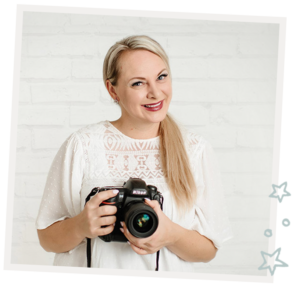
I'm
Lisa DiGeso
I’m on a mission to create uplifting online experiences for photographers ready to elevate their art, their business and their mindset.(...and have fun along the way!)















